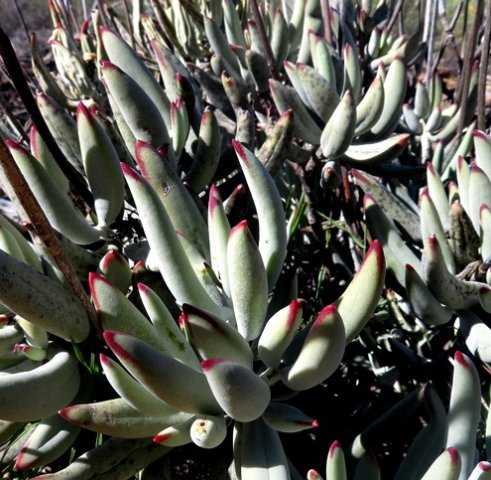Cotyledon orbiculata var. dactylopsis

Author: Ivan Lätti
Photographer: Thabo Maphisa
The very variable Cotyledon orbiculata plant tends to spread low branches in the open, those in thicket becoming slender and tall. The species is adapted to many living conditions reflected in habit, shape and colour.
The succulent leaf bodies are a bit like slender seals, erect in searching the sky for the source of a smell that tickles their purple-red "noses". The common name of finger pig’s ear exists for this one, beside the formal one of C. orbiculata var. dactylopsis. The Greek words, daktylos, meaning finger and -opsis meaning appearance tell the story.
These almost terete (cylindrical) Cotyledon orbiculata leaves were seen near Springbok in Namaqualand, where the plant is known as the pêpêbos (pêpê bush), an onomatopoeic name referring to the flower stalk used as a flute by hunters to make a sound, pêpê, resembling the call of the young klipspringer. This sound attracts klipspringers, making them easy prey.
Var. dactylopsis is distributed in parts of the Northern Cape, the Eastern Cape and the Free State.
The habitat is arid flats in the central parts of South Africa. The habitat population of the variety is deemed of least concern early in the twenty first century.
The fleshy inside of a C. orbiculata leaf is sometimes applied to soften and remove hard corns and warts (Le Roux, et al, 2005; iNaturalist; http://pza.sanbi.org; http://redlist.sanbi.org).

